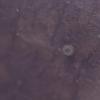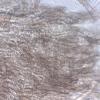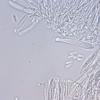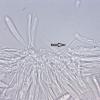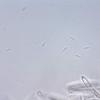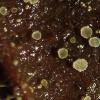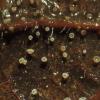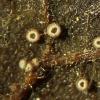
28-10-2025 19:33
 Nicolas Suberbielle
Nicolas Suberbielle
Bonjour à tous,Je voudrais votre avis sur cette r

31-10-2025 09:19
 Lothar Krieglsteiner
Lothar Krieglsteiner
Can somebody provide me with a file of:Rogerson CT

09-08-2025 13:13
 Maria Plekkenpol
Maria Plekkenpol
Hello,Yesterday I found these on burnt soil. Apoth

25-11-2016 13:54
 Stephen Martin Mifsud
Stephen Martin Mifsud
Hi, I found numerous seeds of Washingtonia robusta

28-10-2025 22:22
 Bernard Declercq
Bernard Declercq
Hello.I'm searching for the following paper:Punith

28-10-2025 11:29
 Tanja Böhning
Tanja Böhning
Hello, I found this very small (ca 0,5mm) yellow
I have been puzzling over specimens of Fuscolachnum growing on dead leaves of Rubus fruticosus, and in particular the distinction between F. dumorum and F. misellum.
Details of the specimen illustrated are as follows:
Apothecia <150 µm diameter; pale brown hymenium; short-stalked to sub-sessile; hairy outer surface.
Excipulum apparently a textura prismatica (but difficult to see clearly).
Asci 35-45 x 5-7 µm; arising from croziers; blue apices in IKI.
Spores clavate; 6-8 x 2 µm; with a few small oil bodies.
Paraphyses narrowly cylindrical; 1-1.5 µm wide; about as long as asci.
Hairs brown; granular throughout; 25-40 x 3-4 µm.
I have very little information on F. misellum, but I believe one of the key differences between this species and F. dumorum is the form of the paraphyses. For example, the keys to Hyaloscyphaceae on the Mycokey website describe the paraphyses of F. dumorum as lanceolate 2-3 µm wide, and the paraphyses of F. misellum as cylindrical 1-2 µm wide. This distinction seems to be confirmed by the images on Ascofrance. Images of the two species on Ascofrance and elsewhere also seem to suggest that in F. dumorum asci arise from simple septa, whereas in F. misellum they arise from croziers.
On this basis I believe that my specimen is F. misellum, but I would be interested to hear from anyone who has experience of this species.
Many thanks
Marcus
Je vous invite à aller voir sur le site, à cette adresse
http://www.ascomycete.org/fr-fr/revue/RevueVol3.aspx
Quatre discales récoltés sur feuilles de Rubus
et
Clé des espèces du genre Fuscolachum
René

I have no experience of F. misellum but collected F. dumorum several times which is obviously different in all points you mention (paraphyses crosiers, spores length) .
Rene already gave you the link to his descrition of F. misellum. I suppose you also have Haines paper on Fuscolachnum ? If not I can help in some way.
Amitiés
Michel
Merci René and Michel
Your information helps to confirm my collection as Fuscolachnum misellum.
I do not have the Haines 1989 paper, so would be interested to see this.
Marcus
here some macrophotos from Fuscolachnum dumorum and misellum. The micros are no passable, but to make these new is no problem, F. dumorum is common on Rubus fruticosus- leaves.
Marcus, I have send You the paper.
Greetings Peter.
The first and second are F. dumorum, the others F. misellum.
it would be wonderful to have these two papers,
could somebody send them to me?
Dougoud R. Clé des espèces du genre Fuscolachnum J.H. Haines (the pdf link at ascomycete.org does not work?)
Haines J.H. 1989. Studies in the Hyaloscyphaceae IV.
Thanks.

Michel

Je serais intéressé aussi par la clé des Fuscolachnum de René Dougoud.
Merci d'avance, amitiés - LUC.
you could find it here:
http://www.ascomycete.org/portals/0/volumes/AscomyceteOrg%2003-01%2024.pdf
Je devrais faire un index de tout ce que j'ai sur Ascomycete.org et l'imprimer. Je vais m'y atteler.

